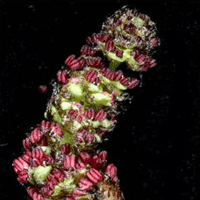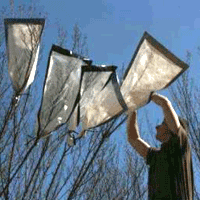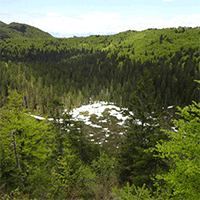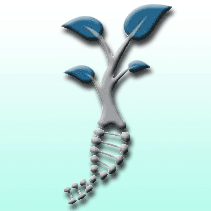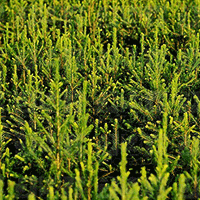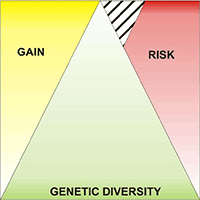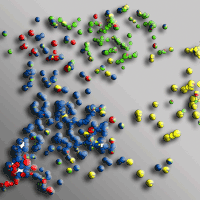
Gene flow in poplar - experiments, analysis and modeling to prevent transgene outcrossing
iForest - Biogeosciences and Forestry, Volume 5, Issue 3, Pages 147-152 (2012)
doi: https://doi.org/10.3832/ifor0618-005
Published: Jun 13, 2012 - Copyright © 2012 SISEF
Technical Advances
Collection/Special Issue: COST Action FP0905
Biosafety of forest transgenic trees and EU policy directives
Guest Editors: Cristina Vettori, Matthias Fladung
Abstract
The demand for energy and forestry products is globally increasing, raising the question if traditional breeding programs are efficient and fast enough to keep up with these demands. A possible solution seems to be the use of genetic engineering techniques, since classical breeding strategies are time-consuming and limited by species barriers. Besides the advantages of genetic engineering technologies, concerns are also raised by scientists regarding these methods. Consequently, risk analysis of genetic modified trees in plantation forestry is a fundamental research topic. This paper presents a sequence of steps in risk analysis dealing with genetic modified poplar clones in the natural environment, ranging from investigations of flowering phenology, to molecular identification of gene flow patterns and their statistical interpretation, to modeling approaches to simulate different scenarios of plantations using genetic modified poplars in realistic European landscapes. All steps are evaluated for their potential to forecast the risk of outcrossing of gene constructs into native populations. The application of the results achieved to short rotation plantations are discussed.
Keywords
Poplar, Genetic Modified Trees, Flowering Phenology, Germination, Simulation Models
Authors’ Info
Authors’ address
Dept. of Conservation Biology, Philipps University of Marburg, Karl-von-Frisch-Straβe 8, D-35032 Marburg (Germany)
Corresponding author
Paper Info
Citation
Bialozyt R (2012). Gene flow in poplar - experiments, analysis and modeling to prevent transgene outcrossing. iForest 5: 147-152. - doi: 10.3832/ifor0618-005
Academic Editor
Gabriele Bucci
Paper history
Received: Jan 24, 2012
Accepted: May 23, 2012
First online: Jun 13, 2012
Publication Date: Jun 29, 2012
Publication Time: 0.70 months
Copyright Information
© SISEF - The Italian Society of Silviculture and Forest Ecology 2012
Open Access
This article is distributed under the terms of the Creative Commons Attribution-Non Commercial 4.0 International (https://creativecommons.org/licenses/by-nc/4.0/), which permits unrestricted use, distribution, and reproduction in any medium, provided you give appropriate credit to the original author(s) and the source, provide a link to the Creative Commons license, and indicate if changes were made.
Web Metrics
Breakdown by View Type
Article Usage
Total Article Views: 54447
(from publication date up to now)
Breakdown by View Type
HTML Page Views: 45446
Abstract Page Views: 3380
PDF Downloads: 3971
Citation/Reference Downloads: 35
XML Downloads: 1615
Web Metrics
Days since publication: 4925
Overall contacts: 54447
Avg. contacts per week: 77.39
Citation Metrics
Article Citations
Article citations are based on data periodically collected from the Clarivate Web of Science web site
(last update: Mar 2025)
Total number of cites (since 2012): 9
Average cites per year: 0.64
Publication Metrics
by Dimensions ©
Articles citing this article
List of the papers citing this article based on CrossRef Cited-by.
References
Pollen vermittelter Genfluss in realen Landschaften. In: “Biometrische aspekte der genomanalyse II- biometrie und medizinische informatik“. Greifswald, Shaker Verla, pp. 160.
Gscholar
Gene flow from tree plantations and implications for transgenic risk assessment. In: “Plantation forest biotechnology for the 21st Century” (Walter C, Carson M eds). Research Signpost 37/661 (2), Fort P.O., Trivandrum - 695 023, Kerala, India.
Gscholar
Die Wirkung verschiedener reproduktiver Hintergründe in einem natürlichen P. nigra - P. × canadensis Hybridkomplex auf Performance-Parameter von Einzelbaumabsaaten. Diploma thesis, University of Marburg, Germany.
Gscholar
The risk of introgression of foreign genes in Populus spec. Differences in the flowering phenology of P. nigra and P. × canadensis. In: “Proceedings of the GfÖ” (Hoffmeister T, Diekmann M eds). Ecological society of Germany, Austria and Switzerland, Berlin, Germany, pp. 91.
Gscholar
Biology of Populus and its implications for management and conservation. NRC Research Press, Ottawa, Ontario, Canada, pp. 531.
Gscholar

